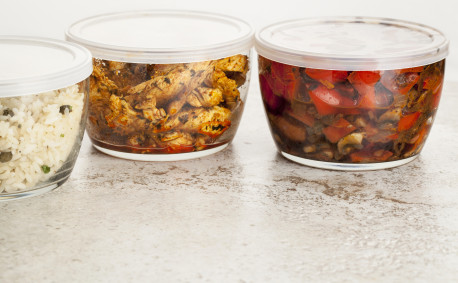How to Reduce Food Waste
Did you know 30 to 40 percent of all food in the United States is wasted? Unfortunately, folks like us contribute a lot to this problem. In fact, consumers are estimated to throw away 133 billion pounds of food each year, or 400 pounds per person. Beyond being wasteful, this is bad for your billfold! The average family of four throws away $1,500 worth of edible food per year — a big bite out of your budget.
 Food waste also has a lasting negative impact on our environment and communities. When food breaks down in landfills, it produces a greenhouse gas called methane, which contributes to climate change. The natural resources (like land, water and energy used to produce unused food) are squandered and could have been put to better use. Plus, some of the wasted food may have otherwise been donated to help meet the dietary needs of our neighbors.
Food waste also has a lasting negative impact on our environment and communities. When food breaks down in landfills, it produces a greenhouse gas called methane, which contributes to climate change. The natural resources (like land, water and energy used to produce unused food) are squandered and could have been put to better use. Plus, some of the wasted food may have otherwise been donated to help meet the dietary needs of our neighbors.
If you made enough food to feed an army, but only needed to feed a squad, consider giving your overflow away. Easily search for your local food bank through Feeding America or find a food pantry using Ample Harvest to learn what they accept. Alternatively, many homeless shelters in Kansas would be thrilled to receive your goodies.
An effective way to reduce food waste within your home is to make use of what you prepare. Don’t shy away from leftovers! Sometimes, they’re tastier than the original dish. Check out this article for tips on safely storing food so you can dig into leftovers for as long as possible.
One of the most common food waste culprits is dairy. These products can be tricky because they have shorter shelf lives than non-perishables, so understanding the “sell by” and “best by” dates on labels will help you enjoy products at their freshest, as well as prevent prematurely tossing safe, nutritious and tasty items.
The sell-by date is the last day the grocery store should sell the product. You can safely buy the product on or before this date. But what does this mean once you get dairy products home? When properly stored in the refrigerator, dairy products can be safely consumed beyond the sell-by date:
- Milk can be used up to one week past this date.
- Soft cheese can last one to two weeks in the refrigerator after the sell-by date.
- Hard cheeses can be consumed one to 10 months after this date.
- Enjoy yogurt for up to 10 days after the sell-by date.
Remember: The “best by,” “best if used by” and “use by” dates indicate the recommended timing for you to consume products for the best flavor and optimal quality. These are not safety dates. On the flip side, here’s how you know when it’s time to toss milk, cheese or yogurt:
- Discard dairy products if they develop an unusual flavor, odor or appearance.
- Mold found on hard cheese should be removed by cutting off a one-inch square around the affected area and discarding it. The rest is safe to eat.
- If mold appears on softer cheese or yogurt, the product should be thrown away.
Like most big problems, we’re all in this together! The federal government recently announced the National Strategy for Reducing Food Loss and Waste and Recycling Organics, with a goal of “reducing food loss and waste by 50 percent by 2030.” From government agencies to single households, we all have a part to play.
Taking a few simple steps to reduce food waste in your home can benefit your budget, the environment and our communities.





